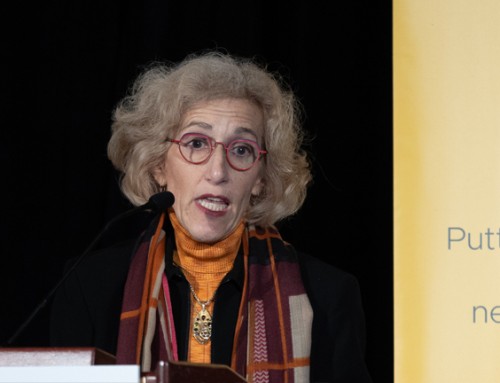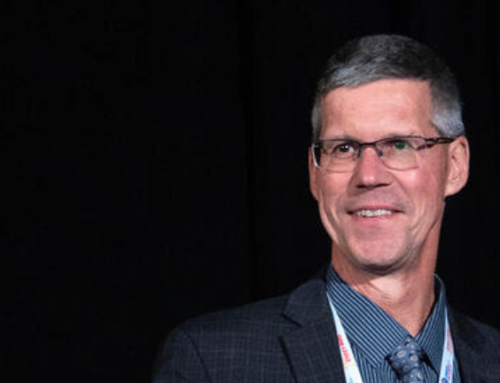Emily Travis was 16 when she began to faint regularly.
Diagnosed with Fetal Alcohol Spectrum Disorder as a 12 lb., year-old infant, her health trajectory had been atypical from the start. But when Travis told her doctor she suspected the fainting was linked to her FASD, she was met with a dismissive response.
“I’d say, ‘I have fetal alcohol syndrome’ and the doctor would say, ‘that doesn’t affect your heart,’” Travis recalls. She was ultimately diagnosed with two heart conditions, severe scoliosis, growth hormone deficiency, and auditory processing and memory issues.
“They don’t understand that these things are secondary to our permanent brain damage,” she says.
Alone in her suspicions until 2013, Travis was 22 and attending International FASD conference in Vancouver, when she spoke with other young adults who were also experiencing a wide range of health issues. She, and two other young adults with FASD, Myles Himmelreich and C.J. Lutke, discussed conducting a survey looking at physical and mental health conditions in adults living with FASD.
With support from researchers—including Kids Brain Health Network Investigator Joanne Weinberg—they surveyed 541 adults who answered 260 questions on medical concerns in 25 different areas. Participants reported experiencing health issues at rates two-to-100 times higher than people do in the general population. Conditions ranged from autoimmune disorders such as lupus, celiac disease, and rheumatoid arthritis to coronary defects such as heart murmurs, sleep issues including apnea and night terrors, as well as early menopause and frequent miscarriages.
For Travis, Himmelreich and Lutke, who had complex health conditions starting in infancy, the results didn’t come as much of a surprise. Their results, published in 2017, a year after Centre for Addiction and Mental Health researcher Svetlana Popova and colleagues identified 400 health conditions associated with FASD, added to the evidence that alcohol exposure in utero doesn’t only affect the brain: it’s a whole-body disorder.
Increasing awareness of secondary conditions in autism
Rosemarie Jordan knows the terrain well. In addition to his diagnosis with ASD, her 7-year-old son has trouble sleeping and reacts to specific foods.
“We see a direct result when he’s eating certain foods versus others,” she says. “His body doesn’t seem to be able to tolerate certain things like dairy and processed foods, and what he eats really affects how he acts.” Her son “gets hyper” and out of control, sometimes reaching the point where he regurgitates his food.
It often takes him several hours to fall asleep, and until very recently he was prone to waking up throughout the night. Jordan is certain both of these issues are related to her son’s autism.
Their experiences mirror findings reported earlier this year in a report by Autism Speaks. Up to 70 per cent of children with ASD were said to experience some type of eating/feeding issue, and more than 50 per cent have one or more chronic sleep problems, including trouble falling asleep and prolonged night waking. These issues, described as behavioural insomnia, are common in other neurodisabilities as well. Kids Brain Health Researchers Penny Corkum and Shelley Weiss are evaluating a successful treatment designed for typically developing children as a strategy for sleep issues in children with autism, FASD, and ADHD.
A whole-body approach to diagnosis
Dr. Gail Andrew—medical director of the FASD clinical services at the Glenrose Rehabilitation Hospital and a consultant to the Glenrose Autism Clinic in Alberta—says her approach to diagnosing both disorders involves a complete assessment.
“I start with the head and I go down to the toes,” says Dr. Andrew. “It’s really detailed because you don’t want to miss something.”
The physical examination includes assessing hearing, eye sight, and dental hygiene, as well as asking how frequently the child gets sick and how consistent their bowel movements are. Andrew will then go on to inquire about mental health, which includes determining if there is any history of abuse or trauma.
One major commonality Andrew finds between children with FASD and ASD is an inappropriate use of medication.
“A lot of the presenting symptoms [of FASD and ASD] are dysregulated behavior. Caregivers are very frustrated, so they go to a family physician who only has a 10-minute window to take their history,” she says. “They simply don’t have time, and it’s so much easier to just reach for the prescription pad. Honestly, I don’t blame them, because they just want to be helpful.”
This scenario can persist into adult life. Through their survey, Himmelreich, Lutke, and Travis accumulated a 33-page list of medications prescribed to adults living with FASD to manage their secondary medical conditions.
Evidence of multiple co-occurring conditions in neurodisability has not yet been translated into widespread clinical practice. Himmelreich, Lutke, and Travis want to change that by publishing their survey. They hope to make an impact on the FASD community as well as physician awareness and training.
“We want to be involved in what information is going out there, because we are the ones that live with this every day,” says Himmelreich. “If you’re going to properly understand and accept us, you need to know what we’re dealing with. That means understanding that FASD isn’t something that just affects the brain, it’s something that affects our whole body.”
Click this link to see a video of their presentation of their findings during a plenary session at the 7th International Conference on FASD 2017 in Vancouver.








